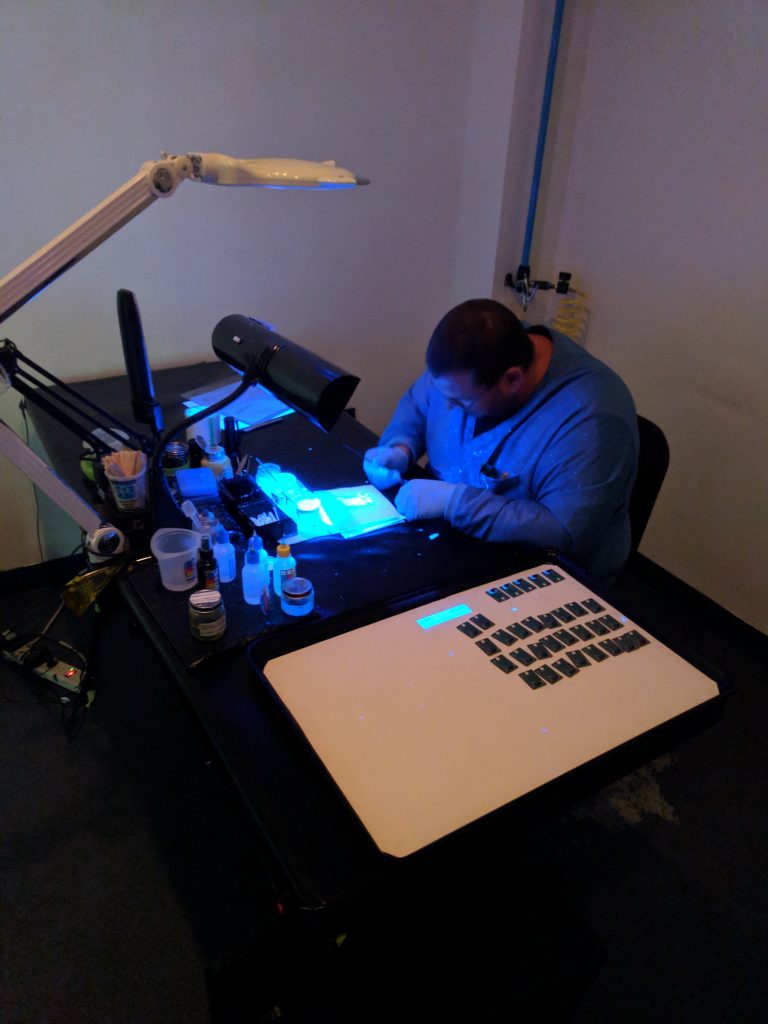Conformal Coating Application Methods
Posted by Sean Horn
Friday, September 1, 2017 7:37
@ 7:37 AM
How To Apply Conformal Coating
Application methods must first reflect the targeted substrate’s susceptibility to the coating material. Liquid coatings – acrylic, epoxy, silicone and urethane – each possess specific performance properties. Optimal protection and operational efficiency depend on
- matching the coating material’s specific properties with an application process
- supporting good interaction between the coating and the PCB,
- leading to reliable assembly performance.
Doing so also limits development of coating defects prior to initiating the coating process.
Choosing the most appropriate coating method is dependent on material considerations, of both:
- the PCB’s purpose and performance expectations throughout its lifespan, and
- the resin’s properties (chemical, electrical, physical, etc.).
Selection criteria include:
- coating compatibility in relation to PCB function,
- operational temperature range,
- sources of potential contamination (chemical, moisture, salt/sand, etc.), and
- specialized, project-specific conditions (coefficient of expansion requirements, etc.).
Regardless of the method used, ensuring robust, stable and uniform coverage requires coating thickness of 1-2 millimeters, another factor determining choice of application method, relative to resin selection and assembly function.
Optimal coordination between PCB type/use, coating material and application method achieves the coating quality specified by assignment directions. Matching application equipment and procedure to project requirements assures technical replication, making the coating process more efficient and less costly, thus generating enhanced film-uniformity during application. Factors of:
- throughput time – coating application speed,
- curing time,
- material cost, and
- rework
also figure in the overall selection of coating application method.
Conformal Coating Application Methods
Spray Application
Either manual or automated spray techniques can be used for all liquid coating materials. Very cost-effective, spray applications also offer better coating surface-quality than other liquid application processes. Automated spray procedures enhance project accuracy, for high-volume spray assignments; masking requirements are reduced.
Dipping Methods
All four liquid coatings can employ dip-immersion processes for producing conformal films; large product-batches of epoxy respond very well to machine dipping procedures.
With dipping, electrical assemblies are immersed completely in the selected liquid solution; coating coalesces around the PCB during immersion. Dipping can be enacted either manually or with automated equipment. In either case, assemblies are submerged in a dip-tank containing the coating solution.
Unlike spray methods, dipping offers dependable under-component penetration. Extensive manual masking can be necessary, but dip processes are otherwise quick to finish. However, if an assembly’s components are situated too-closely on the circuit board, coating problems may develop. Also, despite thorough immersion in the dip tank, inconsistent edge/tip coverage is a potential disadvantage, as are cases of irregular coating thickness. Dip process operators do not require higher level technical skills.
Brush Application
Manual brush-coating is recommended for smaller-batch acrylic and urethane assignments. Epoxy brush application is generally limited to work requiring extreme masking or development of prototype assemblies. Silicone brush-work is typically restricted to touchup operations, where the focus is reworking imperfect surfaces.
Simple and cost-effective, brushing is best-suited to small-batch production; it is too time-consuming to be feasible for larger-scale assignments. Among other process disadvantages:
· Only one side of an assembly can be coated at a time, slowing production.
· Complicated/irregular PCB surfaces interfere with application of uniform film-coating.
· Overly thick films readily crack during thermal cycling, leaving the component vulnerable to infiltration by moisture, oil, salt/sand, and external agents.
· Overly-thin coats similarly produces inadequate protection.
These problems can develop regardless of the operator’s experience or level of skill.
Summary
A conformal coating’s operational effectiveness depends largely on the selection of an application method that reflects the PCB’s functional environment and expected longevity.
Spraying can be used for all liquid coating materials. In addition to high volume advantages, spray booth applications are effective for medium-level production. Manual benchtop spray coating is recommended for smaller-scale rework and repair assignments.
All four liquid coatings accept dip processes for creating conformal films; machine dipping is especially effective for coating large product batches with epoxy.
Despite procedural drawbacks that slow production, liquid brush application is recommended for acrylic and urethane. For epoxy, prototype assemblies or those requiring a lot of masking benefit from brush application. Brush coating for silicone is used primarily during coating touchup operations, reworking imperfect surfaces.
To learn more about applying conformal coating, download our whitepaper now:
{{cta(’04b6937d-eb36-4351-a28a-a0ab9851fddc’)}}
Comments
Homepage 4/17/2020. 10:17:10 AM
... [Trackback] [...] Informations on that Topic: blog.paryleneconformalcoating.com/whats-the-difference-between-potting-and-conformal-coating/ [...]

londondrugscanada.bigcartel.comlondon-drugs 4/17/2020. 10:17:10 AM
cialis uk https://londondrugscanada.bigcartel.com/london-drugs This is nicely expressed. !